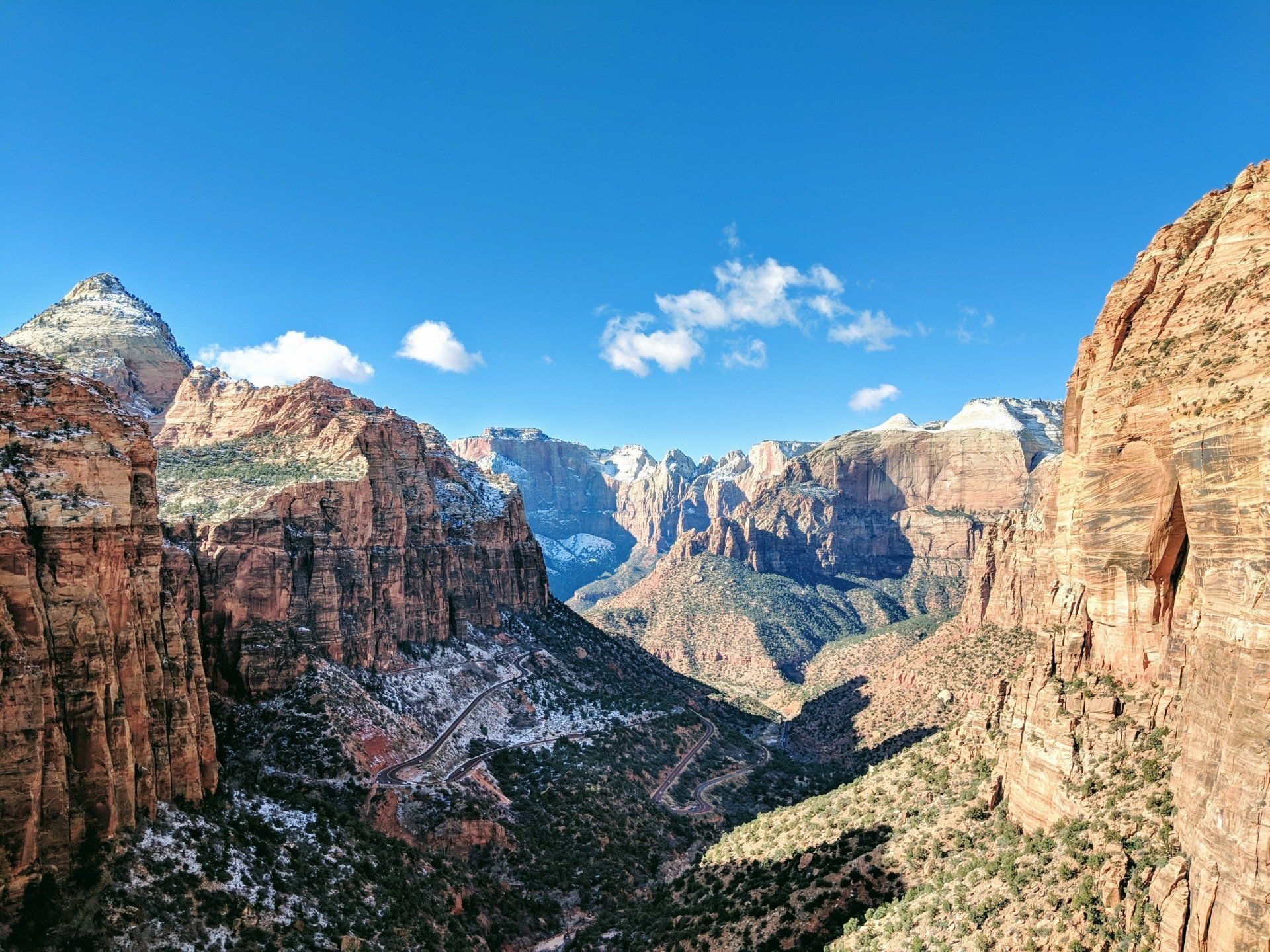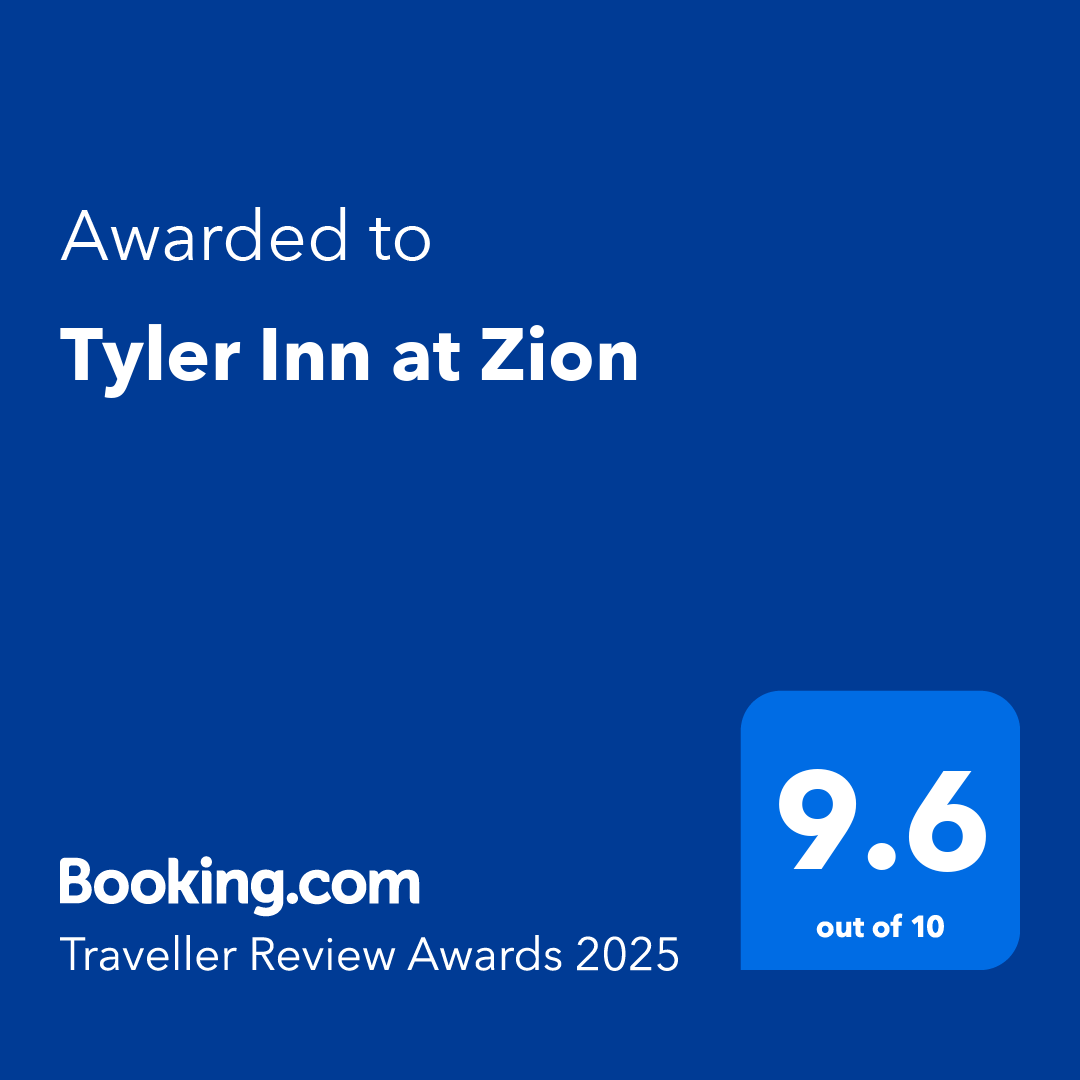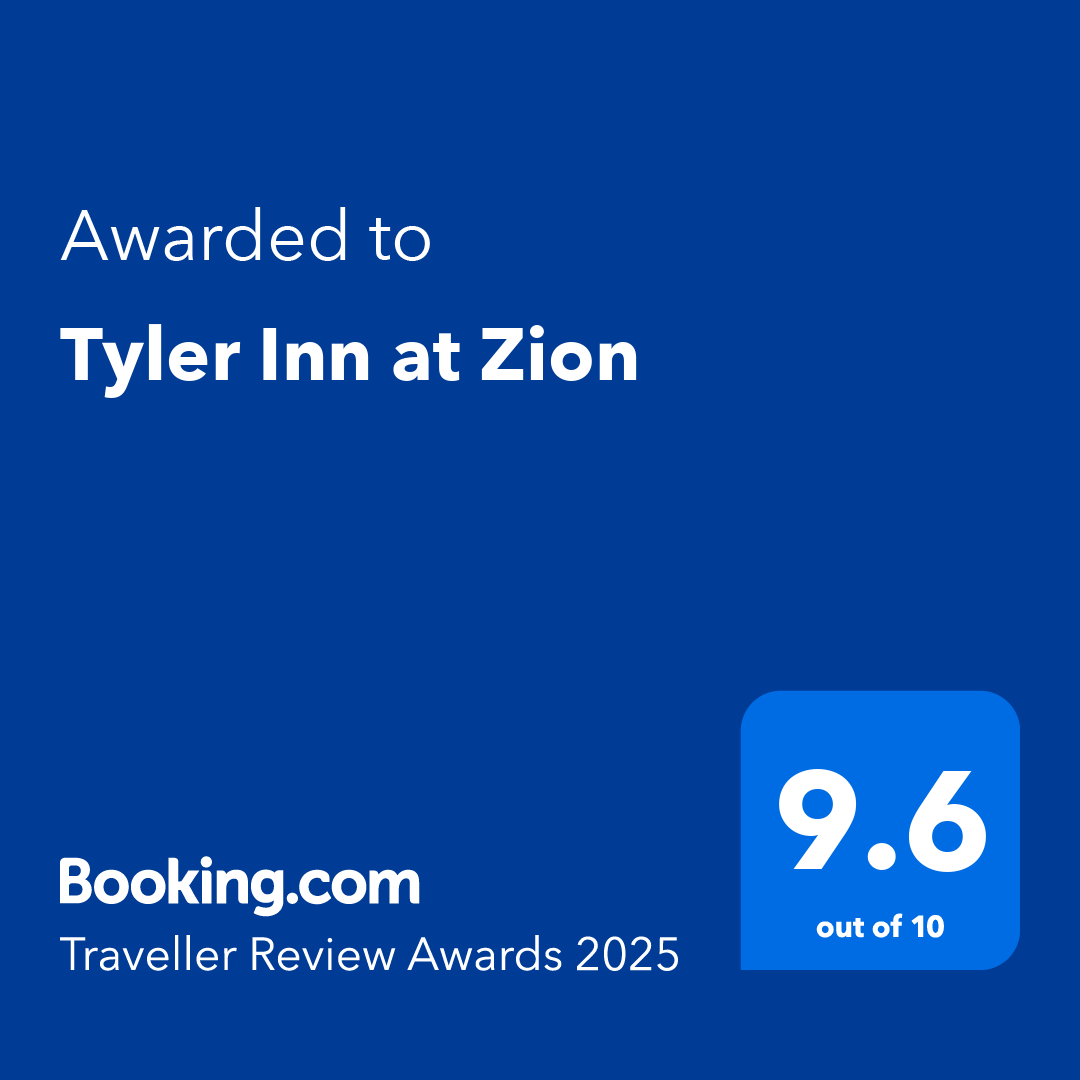 Write your caption hereButton
Write your caption hereButton
Four Secrets to Beat the Crowds at Zion National Park.
Zion National Park is unquestionably the mightiest of Utah’s “Mighty 5” National Parks. Zion is the country’s third most visited national park with more than 5 million visitors pouring into the canyon each year. Hikes like Angel’s Landing and The Narrows are bucket list trails for tens of millions of Americans.
Don’t let the crowds get you down – with a little planning, preparation, and some know-how, beating Zion’s crowds isn’t as hard as it seems. As locals with years of know-how and expertise in Zion, we’re here to share four secrets that will help you beat the crowds and experience the full magic of Zion National Park.
1. Be Prepared
Alright, this isn’t really a secret. But a little preparation goes a long way in Zion. Just because the park is busy doesn’t mean that you can’t do everything you’ve always dreamed of doing. Here are four ways to help you prepare for your visit to Zion
Get Permits
If you’re hiking Angel’s Landing – and you should, it’s an amazing hike that is safer than people make it out to be – then you need a permit. All Angel’s Landing permits are awarded by lottery, and there are two ways to register for the lottery. The first way is to register on the quarterly release of permits 1-3 months in advance. The second way is to register for the lottery the day before you want to hike. A little more than half of all Angel’s Landing permits are awarded this way, so just because it feels last minute doesn’t mean you won’t get your permits. Keep in mind that about 45% of applicants get their permits, so while the odds aren’t exactly in your favor, they aren’t insurmountable either. Persistence is the key here, around 800 hikers reach the summit of Angel’s Landing every single day and there’s no reason you shouldn’t be one of them.
Use the Zion Canyon Shuttle
Angel’s Landing, the Narrows, Emerald Pools, and Zion Lodge are all located in Zion’s main canyon. During peak season, the only way to access the main canyon is by taking the shuttle. Using the shuttle is easy, there are no permits or reservations required, all you have to do is show up and get in line.
With shuttles leaving the Zion Canyon Visitor Center every 5-10 minutes starting at 6 AM, you won’t ever have to wait very long to get to the trailhead of your choice. The trick to beating the crowds with the shuttle is in the timing. As you put together your Zion itinerary, make sure you have an extra hour or so at the beginning and end of your day to account for the shuttle ride up and back from the trailhead.
The most important piece of advice we can give you is not to rely on the last shuttle making its way back from The Temple of Sinawava. Once the shuttle is full, it’s full. If you were to find yourself at the trailhead of the Narrows and the last shuttle of the day had no room for you, you’d be forced to hike more than 7 miles back to the Zion Canyon Visitor’s Center. To avoid this, we strongly advise that you start making your way out of the canyon at least an hour before the last shuttle leaves The Narrows at 8:15 PM during peak season, and 7:15 during the shoulder season.
Start Early
The early bird gets the worm – especially at Zion. Like we said, the first shuttle leaves the Zion Canyon Visitor Center at 6 AM, so if you want to beat the crowds, we recommend getting to the park as early as you can in order to catch that first shuttle. During peak season, it’s not uncommon to see the Visitor Center’s parking lot full at 5:30 in the morning.
Starting early not only helps you to beat the crowds, it will also help you to beat the heat. The majority of Zion’s trails offer no shade and the desert sun in peak season is merciless, starting your adventure early while the air is still cool and the canyon walls are protecting you from the sun.
Visit During the Off-Season
Peak season runs from March to September when the weather is warm and the skies are almost always clear. In the fall and winter months, Zion is much quieter. While it does get too cold to hike trails like the Narrows, Zion’s mild winters and limited precipitation make most of the trails dry and usable.
Less people visit during the winter, and the park doesn’t use the shuttles. That means you’ll be able to drive yourself up Zion Canyon and park at the trailhead, reducing the logistics necessary to experience some of Zion’s best trails. If you plan to visit Zion during the winter, make sure you keep a close eye on the weather and trail conditions. Snow isn’t common, but it does happen at least a few times a year. Make sure you’re prepared to hike in cold weather conditions.
2. Head to East Zion
As we’ve said before, Zion’s most popular trails are all located in the main canyon along the Virgin River. The east section of Zion begins with Mt. Carmel tunnel that takes you up and out of the main canyon to the white sandstone mesas and smaller slot canyons that make up East Zion.
Once you’re up on top of the canyon, the crowds thin out and there are plenty of trails and scenic overlooks where it’s still possible to catch a quiet moment. Here are three of our favorite, quieter trails in East Zion.
Zion Canyon Overlook
This easy one-mile trail leads to an overlook with views of the main Zion canyon. Since the overlook is west-facing, this is a great trail to end the day on and catch the sun sinking behind Zion’s towering walls.
Many Pools Trail
The Many Pools trailhead in East Zion is a delightful, short hike that offers a taste of the park’s unique beauty. This moderately challenging route meanders through a lush, narrow canyon adorned with hanging gardens and striking rock formations.
As you stroll along, you’ll encounter a series of pools carved into the sandstone that create an oasis in the middle of the desert. We recommend downloading the trail in advance, as it can be hard to find sometimes. Since the trail blends into the landscape so well, most people pass it by missing out on the solitude and adventure waiting for them.
Observation Point
Observation Point in Zion National Park offers an exhilarating and rewarding adventure for seasoned hikers. This strenuous, moderately challenging trail leads you to one of Zion’s most iconic overlooks. The end of this trail rewards you with panoramic views of Zion canyon including a direct, overhead view of Angel’s Landing. That’s right, from Observation Point, you can look down on Angel’s Landing. Not only is this hike less crowded (and less nerve-racking) than Angel’s Landing, it has better views at the end.
Observation Point via East Mesa Trail
3. Check Out Kolob Canyon
Kolob Canyon makes up the northwestern corner of Zion National Park that offers an escape from the crowds in Zion’s main canyon. Kolob’s serenity is the definition of a hidden treasure, characterized by quieter trails winding through stunning red rock walls.
Kolob Canyon is significantly less trafficked than the main canyon because it’s disconnected, requiring visitors to drive nearly 40 miles west then north from the Zion Canyon Visitor Center. Here are three of our favorite trails and scenic drives in Kolob Canyon that will give you an escape from the crowds.
Middle Fork Taylor Creek Trail
The Middle Fork Taylor Creek Trail in Kolob Canyon is a fun, moderately challenging hike that guarantees the kind of adventure you can only have in Southern Utah. With mesmerizing red walls on either side of you and lush greenery clinging to the creek, this trail is one you’ll never forget. The highlight of this hike is Double Arch Alcove, a colorful sandstone cathedral tucked into the canyon walls. This trail requires multiple stream crossings, so we recommend trekking poles and water shoes.
Middle Fork Taylor Creek Trail
Kolob Arch via La Verkin Creek Trail
This challenging route is full of steep scrambles and technical trail obstacles and typically requires around 6 hours to complete. Despite the challenge, this is one of the best hikes in Zion National Park.
Kolob Arch is one of the world’s longest natural arches in the world. If you’re determined to enjoy one of Zion’s best-kept secrets, the Kolob Arch via La Verkin Creek Trail shouldn’t be missed. Just make sure you’ve packed plenty of water, snacks, sunscreen, and bug spray.
Kolob Arch via La Verkin Creek Trail
Kolob Canyon Scenic Drive
The Kolob Canyon Scenic Drive in Zion National Park is a breathtaking journey through some of the park’s most captivating landscapes. This 10 mile out & back road offers a leisurely drive with opportunities to pull over at designated overlooks.
As you wind your way through the canyon, you’ll be surrounded by towering red rock formations that create a stunning natural corridor. The drive culminates at the Kolob Canyon Viewpoint, where you’ll be treated to an expansive vista of the Kolob Terrace and the distant Virgin River Canyon. The Kolob Canyon Scenic Drive is a perfect introduction to the beauty of this less-traveled section of Zion, offering memorable vistas without the crowds of the main canyon.
4. Find These Hidden Gems in Zion National Park
Zion National Park is full of hidden gems that are less frequented by the park’s millions of visitors and are overlooked by most. These trails present the unique opportunity to experience the tranquil desert landscape free from the noises and distractions of throngs of hikers.
Here, you’ll encounter stunning vistas, distinctive rock formations, and the pristine, silent beauty that has dominated this region for millions of years. These hidden gems allow for an intimate, peaceful connection with the park’s natural wonders, granting you the chance to fully appreciate the serene majesty of Zion National Park.
Northgate Peaks via Kolob Terrace
The Northgate Peaks Trail is located between Zion’s main canyon and Kolob Canyon, taking you into Zion’s backcountry and far away from the crowds. This moderately challenging 6 mile route offers a distinctly different perspective of Zion’s incredible beauty. The twin summits of the Northgate Peaks reward hikers with enchanting vistas of whites, oranges, and greens. It’s common for hikers to report having the entire trail to themselves during their exploration of the Northgate Peaks.
Northgate Peaks via Kolob Terrace
Grapevine to Left Fork Falls
Waterfalls aren’t common in Zion National Park, but if you look in the right places, you can find them. Left Fork Falls is easy to miss and rarely visited, but we believe it’s worth the effort. Although the trail is 2 miles long, it presents a moderate challenge. The trail starts with a steep descent before following the left fork of North Creek up to the secluded falls. We recommend bringing trekking poles and plenty of drinking water.
Wildcat Canyon Trail
The Wildcat Canyon Trail is perfect for the avid hiker eager to immerse themselves in Zion’s elusive backcountry. This challenging route will lead you through a less-visited part of the park, surrounding you in silence and unforgettable desert landscapes. From wooded sections to open meadows to rolling sandstone hills, this trail does an excellent job of showcasing Zion’s rich ecology.
Bonus Secret: Stay Close at Tyler Inn at Zion
Whether you’re planning on beating the crowds or avoiding them entirely, staying close to the park is the biggest favor you can do yourself when you visit Zion National Park. This is where we come in. At Tyler Inn at Zion, we’re just a few minutes from Zion’s main entrance. That proximity will save you time and give you a crucial head start while allowing you to get more rest and start fresher than everyone else.
Get off to the right start by savoring our freshly prepared breakfast before you head into the park for the day. Our homemade breakfasts are served daily in our dining room, where you can look out on Zion’s unique landscape. After a day full of exploration, return to our comfortable and spacious rooms that provide the comforting ambiance of home. Our accommodations feature plush, cozy beds and elegant private bathrooms, ensuring your stay at our bed and breakfast in Zion is full of relaxation and rejuvenation.







